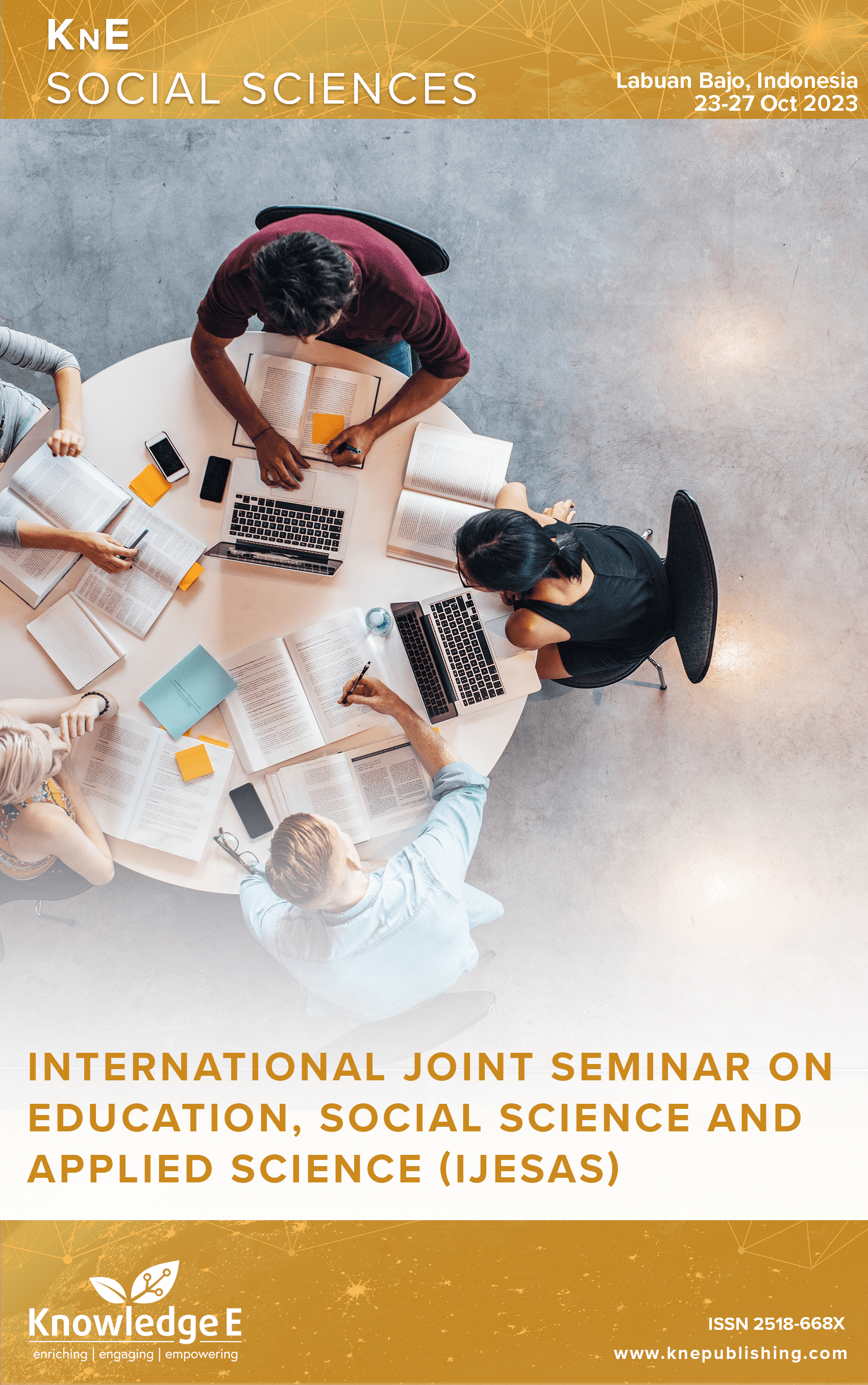District Capacity Revitalization for Strengthening Administration of Traditional Villages in Jayapura District: A Mixed Method Approach
DOI:
https://doi.org/10.18502/kss.v9i19.16505Abstract
This study aimed to challenge the strengthening of regional governance in Jayapura District, particularly focusing on the administration of traditional villages. It aligns legislative initiatives aiming to enhance governance through community empowerment and nurturing local wisdom, despite existing challenges in effective governance and development outcomes. The primary objective is to create a comprehensive framework for District Capacity Building in Village Administration. Employing a mixedmethod approach, the study combines quantitative data from structured surveys with qualitative data from FGD. Purposive sampling targets government officials and community leaders, ensuring data relevance. Statistical analysis of survey data provides a baseline understanding of district capacity, while FGDs offer in-depth insights into specific challenges and dynamics. The research introduces a refined district capacity strengthening model using the Treaming Theory, indicating indirect influences of funding, district capacity, and infrastructure on district head duties and functions through district authority. This model underscores the need for increased district authority, supported by improved funding and infrastructure, to enhance traditional village development effectively. The study reveals that revitalizing district roles as development centers and traditional village development districts can significantly improve regional governance in Jayapura District and provide recommendations for policy formulation, strengthening implementation of district functions, and enhancing traditional village governance.
Keywords: district authority, government management, traditional villages
References
Antlöv H, Wetterberg A, Dharmawan L. Village Governance, Community Life, and the 2014 Village Law in Indonesia. Bull Indones Econ Stud. 2016;52(2):161–83. DOI: https://doi.org/10.1080/00074918.2015.1129047
Indonesia, Law Number 25 of 2009 concerning public services. 2009.
Indonesia, Law Number 5 of 2014 concerning National Civil Apparatus. 2014.
Indonesia, Law Number 6 of 2014 concerning Villages. 2014.
Indonesia, Law Number 23 of 2014 concerning Regional Government. 2014.
Indonesia, Law Number 30 of 2014 concerning Government Administration. 2014.
Amirullah A, Rumbaru M, Sahib R. Role of Traditional, Social, Religious, and Government Leaders in Building Harmonious Relations Between Religious People in Jayapura City. SANGKéP: Jurnal Kajian Sosial Keagamaan. 2022;5(2):157–67. DOI: https://doi.org/10.20414/sangkep.v5i2.3056
Qin RJ, Leung HH. Becoming a traditional village: heritage protection and livelihood transformation of a Chinese village. Sustainability (Basel). 2021;13(4):1–28. DOI: https://doi.org/10.3390/su13042331
Zhang P, Li S. Associative cultural landscape approach to interpreting traditional ecological wisdom: A case of Inuit habitat. Front Archit Res. 2023;13(11):1–19. DOI: https://doi.org/10.1016/j.foar.2023.09.008
Kabupaten Jayapura, Keputusan Bupati Jayapura Nomor 320 Tahun 2014 tentang Pembentukan 36 Kampung Adat di Kabupaten Jayapura., 2014.
Kabupaten Jayapura, Keputusan Bupati Nomor 319 Tahun 2014 tentang Perlindungan dan Pengakuan Masyarakat Hukum Adat., 2014.
Tashakkori A, Creswell JW. The New Era of Mixed Methods. J Mixed Methods Res. 2007;1(1):3–7. DOI: https://doi.org/10.1177/2345678906293042
Kurtalaqi F, Miltgen CL, Viglia G, Pantin-Sohier G. Using advanced mixed methods approaches: combining PLS-SEM and qualitative studies. J Bus Res. 2024;172(2):114464. DOI: https://doi.org/10.1016/j.jbusres.2023.114464
Schrauf R. Mixed Methods Designs for Making Cross-Cultural Comparisons. J Mixed Methods Res. 2017;12(4):477–94. DOI: https://doi.org/10.1177/1558689817743109
Östlund U, Kidd L, Wengström Y, Rowa-Dewar N. Combining qualitative and quantitative research within mixed method research designs: a methodological review. Int J Nurs Stud. 2011 Mar;48(3):369–83. DOI: https://doi.org/10.1016/j.ijnurstu.2010.10.005
Jones I. Mixing Qualitative and Quantitative Methods in Sports Fan Research. Qual Rep. 1997;3(4):1–8. DOI: https://doi.org/10.46743/2160-3715/1997.2014
Haynes-Brown TK. Using Theoretical Models in Mixed Methods Research: An Example from an Explanatory Sequential Mixed Methods Study Exploring Teachers’ Beliefs and Use of Technology. J Mixed Methods Res. 2023;17(3):243–63. DOI: https://doi.org/10.1177/15586898221094970
Malina MA, Nrreklit HS, Selto FH. Lessons learned: advantages and disadvantages of mixed method research. Qual Res Account Manag. 2011;8(1):59–71. DOI: https://doi.org/10.1108/11766091111124702
Johnson RB, Onwuegbuzie AJ, Turner LA. Toward a Definition of Mixed Methods Research. J Mixed Methods Res. 2007;1(2):112–33. DOI: https://doi.org/10.1177/1558689806298224
Samuelsson R. A Mixed Methods Approach to Analyzing Embodied Interaction: The Potentials of Integrated Mixed Methods Analysis of Video Interaction Data. J Mixed Methods Res. 2023;0(0):1–17. DOI: https://doi.org/10.1177/15586898231225496
Bajari AB, Renyaan D, Rumsowek M, Maniagasi YG, Rumkabu JK, Risal S. Education on Service Standards in Nolokla Village, East Sentani District, Jayapura Regency. Indonesian Journal of Society Development. 2023;2(2):119–30. DOI: https://doi.org/10.55927/ijsd.v2i2.3823
Kadir A. Realizing Order in Socio-Cultural Life Through Multicultural Education in Skow Sae Village, Jayapura City, Papua. Formosa Journal of Science and Technology. 2023;2(4):1015–30. DOI: https://doi.org/10.55927/fjst.v24i4.3798
Bagozzi RP. Structural equation models are modelling tools with many ambiguities: comments acknowledging the need for caution and humility in their use. J Consum Psychol. 2010;20(2):208–14. DOI: https://doi.org/10.1016/j.jcps.2010.03.001
Bagozzi RP, Yi Y. Specification, evaluation, and interpretation of structural equation models. J Acad Mark Sci. 2012;40(1):8–34. DOI: https://doi.org/10.1007/s11747-011-0278-x
Taber KS. The Use of Cronbach’s Alpha When Developing and Reporting Research Instruments in Science Education. Res Sci Educ. 2018;48(6):1273–96. DOI: https://doi.org/10.1007/s11165-016-9602-2
Reumi F, Katjong K. The Legal Standing of Ulayat Rights and Communal Rights of a Land Based on Knowledge and Kindship of Community System of the Sentani Customary Law in Jayapura Regency, Papua. International Journal of Multicultural and Multireligious Understanding. 2021;8(9):244. DOI: https://doi.org/10.18415/ijmmu.v8i9.2982
Moore L, Mell I. “Examining the role of Business Improvement Districts (BIDs) as contemporary alternatives for Green Infrastructure funding in London, UK.,” Urban Forestry and Urban Greening. vol. 83, no. Article. 2023;127904:88–100. DOI: https://doi.org/10.1016/j.ufug.2023.127904
R. Taherkhani, N. Hashempour, and M. Lotfi, “Sustainable-resilient urban revitalization framework: Residential buildings renovation in a historic district.,” Journal of Cleaner Production. vol. 286, no. xxxx, p. 2021. https://doi.org/10.1016/j.jclepro.2020.124952. DOI: https://doi.org/10.1016/j.jclepro.2020.124952
Widyastomo D, Nion WM. The Resilience of Traditional Settlements of Sentani Indigenous Peoples on Lake Sentani Island, Jayapura District, Papua. Int J Sci Res Sci Eng Technol. 2022;9(3):167–74. DOI: https://doi.org/10.32628/IJSRSET122931
Siahay AZ, Hadiwidjojo D, Rofiaty D. Budgetary Participation and Village Development Performance (Study at Jayapura City). Eur J Bus Manag. 2014;6(33):1– 9.

